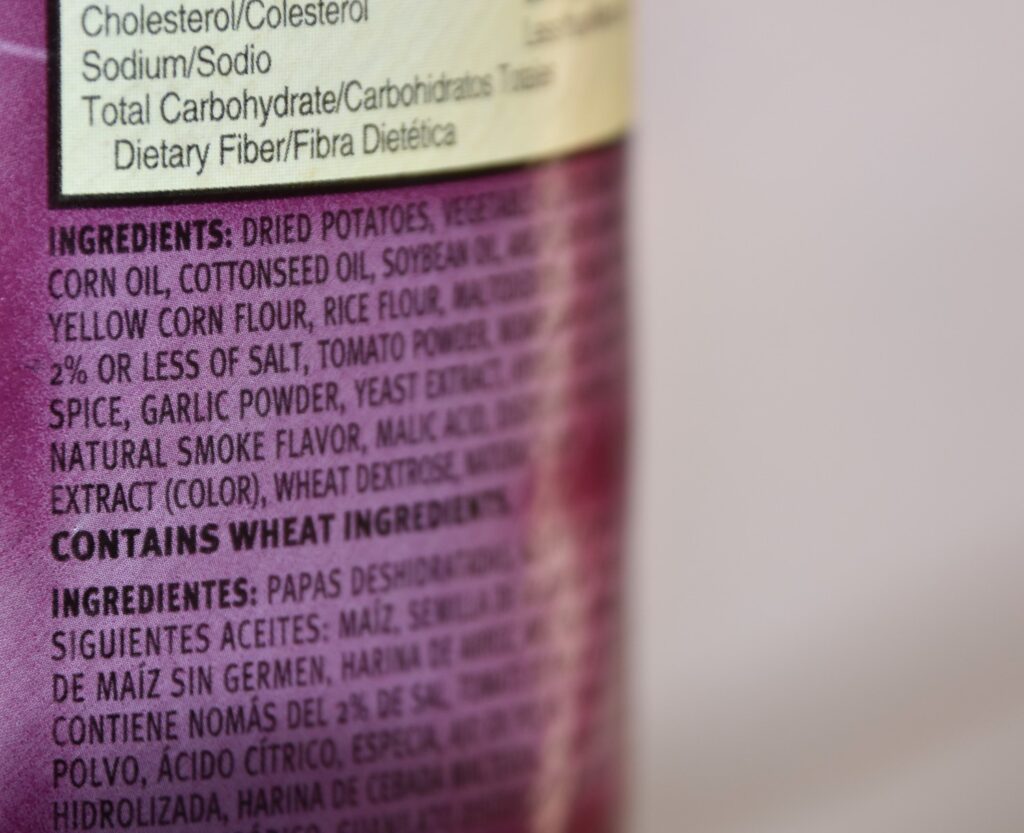12 Cunning Schemes Grocery Stores and Manufacturers Employ to Dupe Customers (And How to Outsmart Them)

When we step into a grocery store, we assume that the products on the shelves are there for our convenience and benefit. However, behind the scenes, grocery stores and manufacturers employ various tricks and tactics to influence our purchasing decisions. In this blog, we will explore the hidden tricks often used to deceive customers, while also providing practical solutions to help you navigate these challenges and make informed choices.
Let’s start with the Grocery Stores themselves.
GROCERY STORE TACTICS

Perishable Items Near the Entrance:
Have you ever walked into a grocery store and not seen the produce section on the immediate left or right side? NO! Grocery stores place fresh produce or bakery items near the entrance on purpose, creating an inviting and vibrant atmosphere. This tactic aims to entice customers with visually appealing and fragrant products, increasing the likelihood of impulse purchases. However, these items are often priced higher than comparable products found elsewhere in the store.
Solution:
Make a shopping list beforehand and stick to it. If you’re tempted by perishable items near the entrance, pause and consider if they align with your needs and budget. It’s better to plan your purchases based on your meal plans and budgetary constraints.
Shelf Placement:
Grocery stores strategically place products at eye level, making them more likely to be noticed and purchased. Items placed at the ends of aisles or near the checkout counters are often impulse purchases or specially promoted products.
Solution:
Look beyond eye-level shelves and take your time to explore all the options in a particular category. This will help you discover alternative products and potentially save money. Look for store-brand options, which are often of similar quality but more affordable.
Decoy Pricing:
Grocery stores often place a higher-priced item next to a lower-priced one to make it appear as a better deal. This tactic can influence your decision-making, leading to higher spending.
Solution:
Double-check the unit price and compare similar products to make an informed choice. Don’t let the proximity of high-priced items influence your decision.

Impressive Displays:
In-store displays with appealing aesthetics and creative arrangements are designed to attract attention. They often feature products that are on promotion or nearing their expiration date.
Solution:
While these displays can be visually appealing, remain focused on your shopping list and the products you actually need.
Phantom Discounts – Confusing Sales and Pricing Tactics
Grocery stores frequently offer sales and promotions to entice customers. However, some of these discounts may not be as attractive as they seem. For instance, a product may be marked as “50% off,” but the original price may have been inflated beforehand.
Some stores commonly use deceptive pricing strategies by initially marking up prices before offering discounts or sales. This can give the illusion of a significant discount, even though the product is still more expensive than its original price.
Solution:
Keep track of regular prices for frequently purchased items, and refer to price comparison websites or apps to ensure you are getting a genuine bargain. This will help you determine if the discounted price is genuinely a good deal.
MANUFACTURER DECEPTIONS
Misleading Packaging (AKA Shrinkflation)

Shrinkflation is a tactic where manufacturers reduce the size or quantity of a product while keeping the price the same or slightly increasing it. This can be subtle, making consumers unaware that they are getting less for their money. For instance, a chocolate bar may shrink from 100g to 90g, but the packaging and price remain unchanged. I have noticed this with so many products over the past year or so. Remember when a package of bacon was a pound or 16 oz? Today, you are lucky to see a 12 oz package.
Many products feature eye-catching packaging that can be misleading. For example, oversized packaging may create an illusion of abundance, while vibrant colors and tempting images may distract you from the actual contents. Always read the labels and ingredients list to ensure you are making an informed choice.
Solution:
Familiarize yourself with the size and weight of commonly purchased items, so you can recognize discrepancies between packaging and actual quantity. Calculate the price per unit to determine if you are still getting a good value.
Hidden Sugar Content:
Manufacturers often add excessive amounts of sugar to various processed foods, even those that are marketed as “healthy” or “natural.” This hidden sugar can lead to health issues, such as obesity and diabetes.
Solution:
Read the nutrition labels carefully and opt for products with low sugar content or natural sweeteners. Consider cooking fresh meals using whole ingredients whenever possible.
Tricky Portion Sizes:
Some products display nutritional information based on unrealistically small portion sizes, making them appear healthier than they actually are. This can mislead consumers about the true calorie or sugar content.
Solution:
Pay attention to the serving size mentioned on the packaging and adjust your calculations accordingly. Evaluate the product’s nutritional value based on realistic portion sizes.
Confusing Ingredient Lists:
Manufacturers may use complex scientific terms or alternative names for unhealthy ingredients to make them sound more appealing. They often place these ingredients at the end of the list to give an impression of lower quantities.
Examples to be on the lookout for:
- Monosodium Glutamate (MSG) MSG is a flavor enhancer commonly used in processed foods. It is often listed on ingredient labels under different names such as “hydrolyzed vegetable protein,” “autolyzed yeast extract,” or “glutamic acid.” These alternative names may make it difficult for consumers to recognize the presence of MSG, which can cause adverse reactions in some individuals.
- High-Fructose Corn Syrup (HFCS): HFCS is a sweetener derived from corn. It is used in numerous processed foods and beverages. Manufacturers may use alternative names for HFCS, such as “corn sugar” or “glucose-fructose syrup,” to make it sound more natural and less processed. However, HFCS has been linked to various health issues, including obesity and metabolic disorders.
- Artificial Sweeteners: Artificial sweeteners like aspartame, sucralose, and saccharin are commonly used as sugar substitutes in diet or “sugar-free” products. To make these ingredients sound more appealing, manufacturers often refer to them by their brand names (e.g., NutraSweet, Splenda) or use terms like “zero-calorie” or “diabetic-friendly.”

Solution:
Familiarize yourself with common food additives and their alternative names. Prioritize products with shorter ingredient lists and recognizable, whole-food ingredients.
False Farm Imagery:

Solution:
Look for specific information about the product’s origin, such as the country or region where it was produced. Consider purchasing from local farmers’ markets or directly from producers to ensure the authenticity of the source.
“Natural” or “Organic” Labels:
Labels can be misleading, making it difficult for consumers to understand the true nature of a product. Terms like “all-natural,” “made with real fruit,” or “low-fat” can create an illusion of healthiness, even if the product contains artificial ingredients or excessive sugar. These terms are not consistently regulated and can be used as marketing ploys.
Solution:
Look for certifications from reputable third-party organizations, such as USDA Organic, that have stringent standards for organic products. Read the ingredients list to ensure the product aligns with your expectations.

False Health Claims:
Some products boast health claims on their packaging without substantial evidence to support them. Words like “superfood” or “miracle cure” can be used to grab attention and deceive consumers.
Solution:
Look beyond the flashy claims and focus on the actual nutritional value of the product. Consult reliable sources, such as scientific studies or nutritionists, to assess the legitimacy of health claims.
What You Can Do:
By being aware of these hidden tricks, you can become a more discerning and informed shopper. Remember to read labels, compare prices, and rely on credible sources of information to make wise purchasing decisions. With these solutions in mind, you can navigate the grocery store aisles with confidence and ensure that you are not being deceived by clever marketing tactics. Empower yourself as a consumer and take charge of your shopping experience.
Take your time to read the pricing details carefully. Calculate the unit price to compare it to similar products and determine if the sale is genuinely a good deal. Don’t be swayed by the appearance of discounts without verifying the actual savings. Stay focused, plan ahead, and remain mindful of your budget and needs.
Remember, staying informed and vigilant as a consumer is key to avoiding these deceptive tactics.



